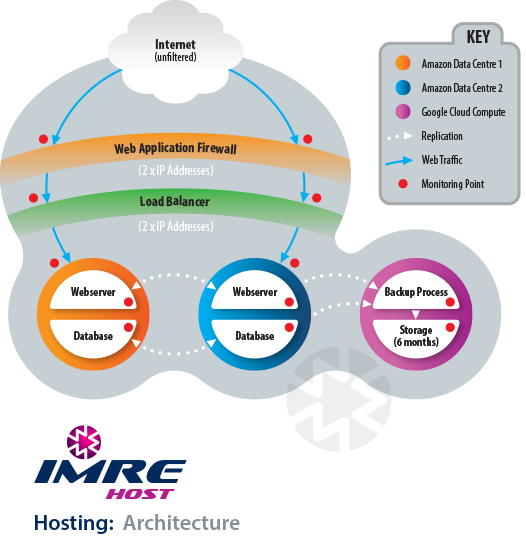Well, actually, it’s not that easy to narrow down to only one thing. We asked our Systems Architect Richard Bevan to tell us the most important things you need to know about Cloud Hosting. Here’s what he came up with.
What is key to know about cloud hosting is what it means to not be on the cloud.
Not hosting on the cloud limits you. There are limitations to your bandwidth, disk-space and even your location. ‘Not-cloud’ hosting cannot handle spikes in traffic, there is a physical risk, and the list goes on.
With cloud hosting, there is a solution to all these, and other problems.
- Physical Location(s): You can have multiple entry points into the general service. This is part of how networks are put together on the internet. With cloud hosting companies they will have “Points of presence” worldwide. This means a request in Japan can likely be responded to from Asia for all or parts of the request.
- Spikes in traffic: There are resources that expand to cope when there are lots of visits to your site at the same time (like when you do a mailshot).
- Capacity: When you upload your new set of marketing PDFs, file storage is almost limitless. In basic hosting setups you might have to upgrade and potentially take your site down to make room as needed.
- Uptime: There are many layers of redundancy, so a slight hardware failure is very unlikely to make your website unavailable.
Going to the cloud frees you up.
Your imagination is the limit. There are a multitude of products, options, new technologies (and with that, risks). You get maximum flexibility and can cut your costs, BUT it is a complex world to navigate.
A move to the cloud is rich with possibilities. To get the benefits, you need an experienced hand to guide you through its many opportunities.
How can our expertise at IMREHOST help you pick a trail through the amazon jungle (if you’ll forgive the pun) that is cloud hosting?
Here’s what you need to know about what it means to be on the cloud:
It can be very time consuming
This type of hosting involves many different elements. Setting up systems and building the architecture required for hosting a simple website can take many hours. In a multi-server, multi-routed hosting setup, things can take a lot longer. If you are going to attempt to do this yourself I would suggest you give yourself a couple of days. This assumes a good understanding of the Amazon Web Services platform (or you know someone with these skills).
Backups
Having backups is important for two main reasons. One, so that you have a copy of your website in case you get hacked; and two, in the case that you have a complete hardware failure (i.e. the Web Server hardware).
Two common hosting providers, Amazon Web Services and Google Cloud Compute, allow you to take snapshots of your hard drives. Whilst this is good, it takes time, cannot be automated, and very possibly won’t capture all your data in a recoverable state.
At IMREHOST, we have looked at many solutions, from hosted backup services that use a WordPress plug-in, to full-system backup solutions like Bacula. You should be asking yourself about backups early on.
Monitoring
Let’s say you already have your site set up and running. Making sure it is properly monitored, and thus up and running correctly, is another task altogether. Cloud platforms are very stable, and provide redundancy (a backup system). But, are you monitoring all the parts of website architecture on your network that are outside the cloud?
At IMREHOST, we monitor:
- 2 x Web Application Firewall IP addresses
- 2 x Load Balancer addresses
- 2 x Webservers (two being the minimum number of servers in our setups)
- Databases
Getting systems set up, backups and monitoring right is very important when moving to the Cloud.
We have curated our solution to provide a decent range of capabilities for WordPress that will not break the bank. You do not need to be a megacorp to benefit from the best that is out there.

